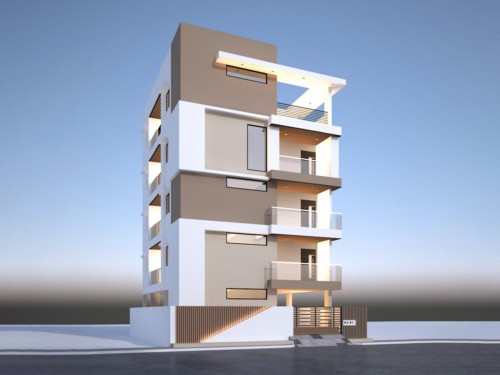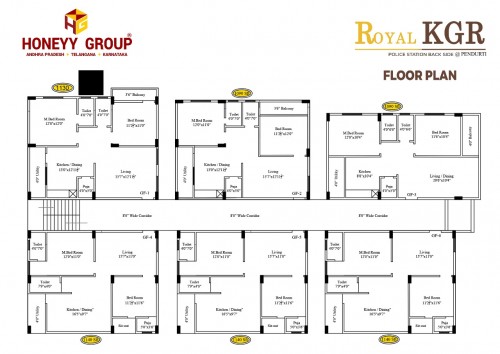Model Tenancy Act
The Model Tenancy Act 2021 has been approved by the union cabinet last week. This will guarantee the rights of the tenants as well as protect the owners from rogue tenants. Let us evaluate each of its provisions and relate to how the act will change the face of the residential real estate market.
Before digging into the aspects of the act, let us first look into the past scenario. As per the census 2011, the number of houses in India that have been vacant are nearly 1 crore. The number might have increased these past few years. This is a worrying scenario for the market in two ways- One, the owners are at a loss with their properties vacant for years together; Two, the ever-increasing case of homelessness among the middle- and lower-income families. The migrating families to the cities have been increasingly finding it difficult to find homes on rent. This is because many owners are unwilling to let out their houses due to low rents and higher maintenance charges.
The government is now trying to bring the rental real estate into the formal sector by drafting the Model Tenancy Act 2021 which will further the interests of both the owners and the tenants.
After enforcement of this act, no person can let or take on rent any premises without an agreement in writing. Unlike the current scenario, the Act seeks to bring the rental real estate into form and function. However, the current Act will be applicable prospectively and not affect the existing tenancies. The Act seeks to cover urban as well as rural areas.
What is Model Tenancy Act, 2021?
-
The MTA is a regulatory framework for both commercial and residential properties, in both urban and rural areas.
-
The MTA will be applicable prospectively, and not affect the existing tenancies.
-
Grievance redressal mechanisms like the District Rent Authority, Rent Court and Rent Tribunal will be set up for quick resolution of disputes.
-
A written agreement made mandatory with clear cut demarcation of roles and responsibilities of both the tenant and landlord.
-
The landlord cannot exact advance rent of more than two months, and cannot evict the tenants until the time period agreed to is completed, until unless specified in the agreement.
-
A digital platform in the vernacular language will be created to upload the rental agreement and the other relevant documents with the District Rental Authority.
-
Subletting of the premises cannot be done without the prior permission of the landlord, and no structural changes can be done by the tenant without the written consent of the landlord.
-
Notices are to be given to the tenant three months prior to the rental increase. There is no cap on the monetary ceiling.
-
The Act will act as a guideline to the states and they are free to adapt a suitable strategy to bring the rental real estate into a formal sector.
-
The Rental court can grant repossession of the property to the landlord in case of any misuse of the property by the tenant.
-
If a tenant refuses to vacate, the landlord can demand two times the current rent for two months and four times thereafter.
-
The Act specifies the demarcation of the list of repairs that the landlord and the tenant can get done. The Act also species the division of expenses for the said repairs.
-
The structural repairs, external electrical wiring, changing plumbing pipes, etc. are under the purview of the landlord whereas any damage cause by the tenant and other works pertaining to drainage, kitchen fixture repairs, maintenance of open spaces come under the tenants’ purview.
The Model Tenancy Act 2021 is hoped to improve the rental market with the division of the roles and responsibilities of the tenant and the landlord. However, since it is only a guideline to the state governments, the implications might vary from state to state.
There is a lot of demand for housing and we have the availability of housing in the country. Without proper grievance redressal, there has been an increase in homelessness and also vacancy of homes. The current rental laws are archaic, the last one being from 1948. The government wants an improvement in the quality of housing for the rental market, by the time the target of “Housing for All by 2022” is reached.
Since Land is a state subject, the central government has been keeping itself aloof from making a tenancy law. But the seed for the Model Tenancy Act 2021 has been laid in 2015. The government aims to improve the situation by guiding the states to make changes in their own rules and regulations.
The initial laws have been made to protect the tenants from the exploitative landlords, however, the rights of the landlords have also been specified. But these laws have been gravely misutilised and as a result rent revenue is only 2-3%, lowest in Asia.
To improve the situation and bring out the best interests of both the tenants and landlords many attempts have been made to modify these laws. However, there has come a time, when there is a need for a brand-new law. Property developers have always been in favor of build-to-sell due to low rental income and profitability. A significant share of the urban population is still living in informal settlements due to low-quality rental housing. The Model Tenancy Act, 2021 seeks to address these larger issues and resolve the smaller disputes through its grievance redressal mechanisms.
However, timely implementation of the act in its true letter and spirit will be essential to resolve the majority of the issues. Timely appointments of the authorities and strict adherence to the timelines are crucial for the act to bring subsequent change in the markets.
The legal framework is also a crucial step in ironing out the challenges faced by both the landlords and tenants. In summary, the Model Tenancy Act 2021 is a reform that aims to alleviate India’s problem of housing shortage by improving housing quality, affordability, and attracting long-term capital. This law has the potential to positively impact on the housing market and put it well on a path to a brighter and better future.







.jpeg)